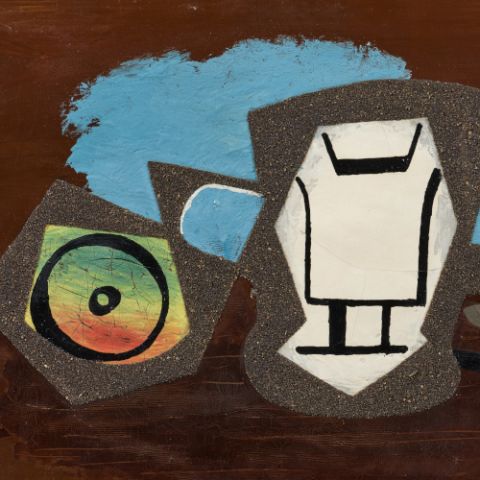
Lot 40 | Steven Parrino | "Lucifer's Hammer"
New York 1958 - 2005
Title: "Lucifer's Hammer".
Subtitle: Diptych.
Date: 1989.
Technique: Each: enamel lacquer on canvas.
Measurement: 123 x 183cm.
Notation: One picture signed, dated and titled verso on the stretcher centre left: S. Parrino 89 Lucifers Hammer. One picture monogrammed, dated and titled: SP. 89 Lucifer's Hammer. Each additionally numbered and with installation instructions verso.
Provenance:
- Private collection Germany (directly form the artist)
Exhibitions:
- Kunstparterre, Munich 2013
- Deichtorhallen Hamburg, 2019
- Kunstmuseum Liechtenstein, Vaduz 2020
Literature:
- Exhib. cat. Hyper! A Journey Into Art and Music, Deichtorhallen Hamburg, Cologne 2019, p. 15, ill.
- Exhib. cat. Steven Parrino, Nihilism is Love, Kunstmuseum Liechtenstein, Cologne 2020, p. 99, ill.
- Parrino is one of the most influential artist personalities of the New York art scene of the 1980s and 1990s
- His "misshaped paintings" are characterised by a radicalism that testifies to a deep understanding of the history of painting
- Title refers to the science fiction novel of the same name by Jerry Pournelle and Larry Niven, published in 1977
- Part of the major 2020 retrospective at Kunstmuseum Liechtenstein
Bad boy and enfant terrible
The American artist, born in New York in 1958, who as a devotee of motorcycle culture loved to wear biker outfits and leather jackets, is known for his “misshapen” or “shapeless paintings”. Experiences at concerts during his youth, such as seeing the rock band “Grateful Dead” when he was thirteen, sparked his enthusiasm for acoustic feedback effects and noise. The anarchic energy of these early influences erupted in Parrino's spontaneously performed, unprepared performances of the 1970s. For example, he would set off a fire alarm and escape through the emergency exit or smash a television set with a sledgehammer. Parrino's affinity for noise and chaos is at the core of his liberal creative approach: “Most people are afraid of total freedom, of nothing, of life. They try to control everything, but nature is uncontrollable. It doesn't matter how you express yourself (whether with words, pictures, the electric guitar), what is important is that you have something to express.” (Parrino, Steven: The No Texts (1979-2003), New Jersey 2003, p. 34)
Parrino, who had studied at the renowned Parsons School of Design in New York, among other places, used the musical possibilities of distortion, bulging, and warping for his visual works. At the end of the 1970s, a time when painting was declared dead, Parrino began to productively use the medium under new conditions. He subjected monochrome canvases, predominantly red, orange, silver or black, to destructive action. With the sudden change, with a break or a disruption, Parrino opened the flat surface violently into space. In line with the basic concept of Minimal Art, he rejected painting as illusionistic deception and instead brought the reality of stretcher bars and canvas surfaces to the fore. This forms the starting point for numerous variations that are created with physical effort: his slashed, torn, cut-out, bent, or twisted canvases result in reliefs whose structured surfaces enable unpredictable light effects.
Rebel with a cause and the devil's tool
In “Lucifer's Hammer”, Parrino frees the canvas, which is painted an all-over orange, from the rectangular contours of the stretcher bars. By loosening the attachment of the stretched cloth in the frame and re-fixing it, the image field shifts. Wrinkles and overlaps form as unprimed areas of the canvas appear: the image seems to have slipped. By detaching the canvas, he humorously plays off the subject of the painting against the representational quality of the image. Parrino, whose yearning for freedom led him to seek out proximity to underground and subcultures throughout his life and who tragically died in a motorcycle accident in 2005, analyzes the conditions of painting while simultaneously and ironically questioning general artistic practice by granting the devil's tool a leading role, at least in the title. He saw himself as a “Frankenstein of painting” who breathes new life into dead matter.
Bettina Haiss.
Modern, Post War & Contemporary Art
+49 221 92 58 62 300
Print this lot | Recommend lot |
Conditions of this Lot
32% buyer’s premium on the hammer price
Estimated shipping costs for this lot:
Arrangement after the auction.

















